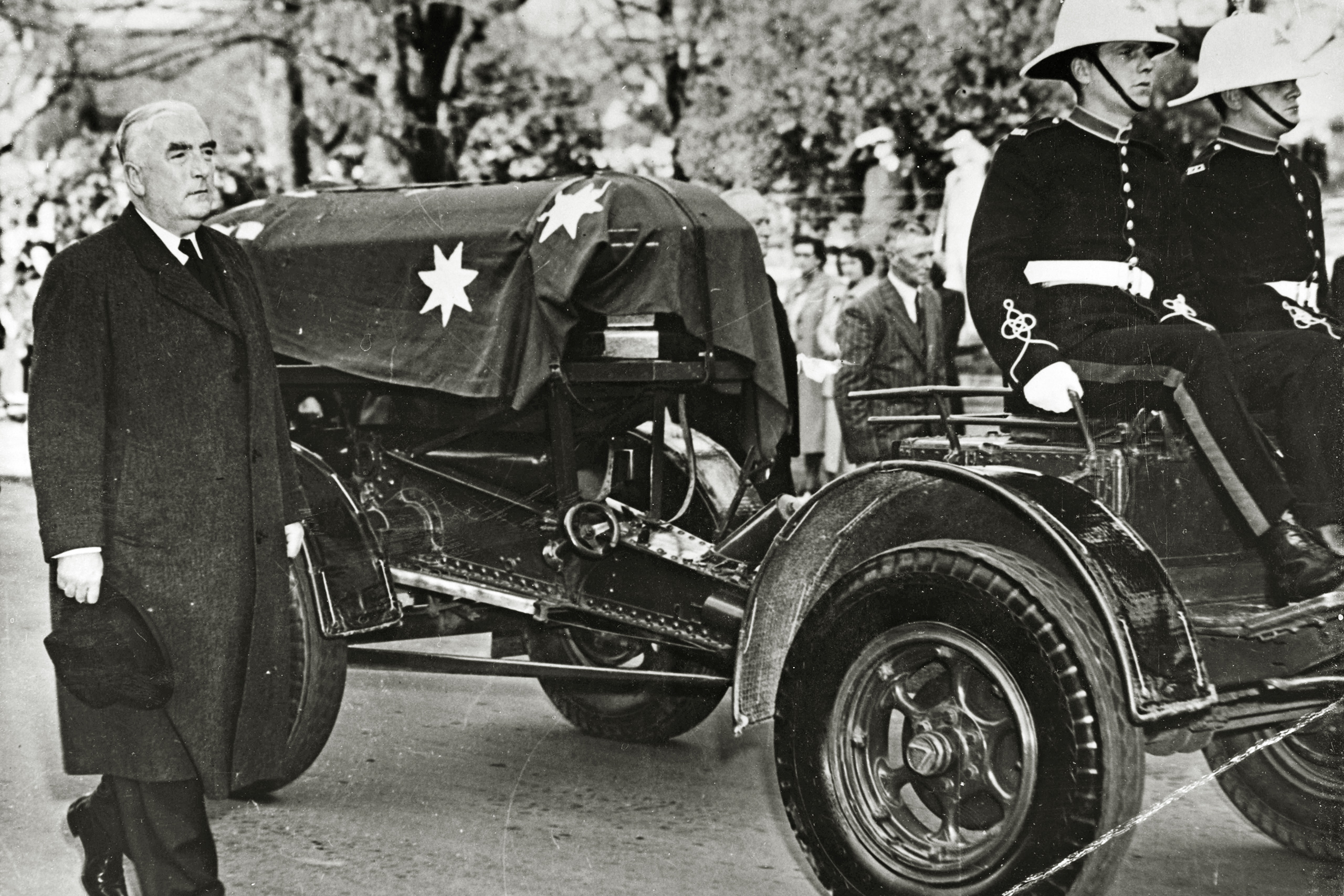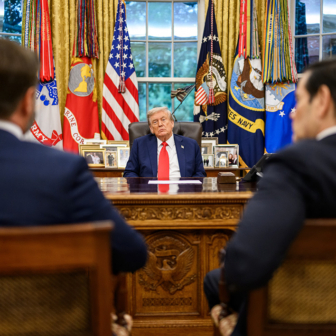Despite its record longevity (or perhaps because of it), the Menzies government has never been short of critics, among the most prominent being the late author Donald Horne and former prime minister Paul Keating.
Horne famously saw Australia as “a lucky country” (the term being employed ironically) “governed by second-rate people” while Keating savaged the Menzies era as a time when Australia was held back by “a near-lethal dose of fogeyism” among conservative parties that had “put the country into neutral.” A less potent, but common, observation is that Menzies benefitted from an inordinate measure of political luck.
Political historian Greg Melleuish concedes that Menzies was favoured by fortune “because he was the leader for his times” — a man with skills of political manipulation that enabled him to win popular support. Of course, the Labor Party’s split in 1955 did him no harm either, and nor did the flaws of Labor leaders H.V. Evatt and Arthur Calwell.
Melleuish makes those observations in The Menzies Ascendency: Fortune, Stability, Progress 1954–1961, the third of the Robert Menzies Institute’s essay collections on the life of the former prime minister. He also makes the reasonable point that if Menzies was “out of touch” (as critics claimed) so too must be the voters who kept electing him, which renders the criticism a somewhat elitist one. The picture he paints of Australia in the 1950s — credit very hard to obtain, limited car ownership and fewer labour-saving devices, few supermarkets, almost no fast food apart from fish and chips, nearly everything (except churches) closed on Sundays — will resonate with older readers. Monoculturalism was a given.
Melleuish contends that this postwar electorate sought security and opportunity rather than “bold plans to change the country,” and the mood fitted Menzies perfectly. In essence, a conservative government was governing conservatively. The Keating critique also ignores the reality that Labor was scarcely advancing a more progressive, reformist program in the 1950s and early 1960s; during those years it offered nothing resembling the policy agenda that would emerge after Gough Whitlam became leader in 1967.
Indeed, on immigration, as historian Paul Brown observes in his chapter, Labor acted more as barrier to incremental liberalisation than as a supporter, with several of its senior MPs citing the need to retain our essential “Britishness.” Not many republicans in the ranks in those days.
On economic issues, 1950s Labor was closer to its previous leader Ben Chifley, the would-be bank nationaliser, than to the future Keating, the deregulator. Economic historian Selwyn Cornish’s chapter on Menzies and the creation of the Reserve Bank serves to highlight Labor’s market scepticism during that era. He also reminds us that Menzies was less than a free-market zealot himself, but on the bank question was persuaded by Liberals to his right economically, while managing to keep the (decidedly non-free market) Country Party coalition partner on side.
Higher education specialist Andrew Norton recalls Menzies’s linking of universities not just with economic and technological progress, but also with “moral and spiritual” development, leading him to support “study of the humanities alongside training for a profession” — a quaint view in today’s utilitarian environment. Norton describes the constitutional and administrative issues raised by Menzies’s slow expansion of the federal government’s role, along with the relevant reviews and funding models.
Norton also outlines the role of Commonwealth scholarships, a useful reminder that university fees were not universal pre-Whitlam. Even by 1961 — the end point of this book — more than 50 per cent of students received some form of scholarship assistance, a figure that would rise later in the decade.
In his chapter on health reform, historian David Furse-Roberts describes the inspiration for the 1953 National Health Act as a “profoundly liberal” focus on individual self-reliance and care of the poor and sick. The scheme involved voluntary contributions to an approved medical benefits fund and, while Furse-Roberts enthuses over its virtues, its lack of universalism was an obvious deficiency. By the late 1960s, the program’s complexity rendered more attractive the proposal for a universal scheme advanced by Whitlam as Labor leader. Health remains a rare example of a policy area in which Labor routinely outpolls the Coalition.
Menzies stressed the need for “great and powerful friends” in a dangerous world and two chapters deal with aspects of foreign policy. Robert Bowker examines the Suez crisis of 1956, focusing on how Australia perceived America’s role at the time and how Australia’s approach affected Canberra–Washington relations. As is well known, Menzies not only backed the wrong horses — Britain and France — but also led the ill-fated diplomatic mission to Cairo that probably represented the low point of his second prime ministership.
Relations with the United States were strained by Menzies’s attitude to the Suez, but Bowker judges that no lasting damage was done to US perceptions of Australia. His observation that “Menzies had been part of a lion’s last roar” stands as an apt judgement.
International relations specialist Sean Jacobs credits Menzies with skilful handling of the West New Guinea dispute in the early 1960s. Again, a fading empire (the Netherlands) was clinging to a colonial possession and again Australia’s emphasis was different from that of the United States. Each was concerned with the threat of communism, but some might suspect that in this case the worry provided Menzies with useful cover for his (increasingly less fashionable) pro-colonialist outlook.
The Menzies Ascendancy ends in 1961, the year its subject came near to being ejected from the Lodge. Historian Lyndon Megarrity covers Queensland’s role in that year’s cliffhanger election (Menzies retained government by one seat on the floor of the House), stressing that it was a perception of neglect by Canberra that swung the state strongly to Labor. But, as political scientist Paul Strangio emphasises, it was Victoria’s failure to swing, rather than the Liberals’ hanging on to the decisive seat in Queensland (Moreton), that was the key factor. From the Labor split until his last election in 1963, Menzies could rely on Victoria delivering a solid Coalition majority because Labor — at its most leftwing in that state — could be relied on to deliver “woeful electoral underperformance.”
With one volume to go, the finish line is in sight for a commendable series of books that has mostly been balanced in outlook, although its relatively few hagiographical elements haven’t been unexpected given Menzies’s role as party founder and hero. His remaining years in office saw (among other things) the decisive move on state aid to non-government schools and the commitment of troops to the Vietnam war, ingredients for an interesting final volume. •
The Menzies Ascendency: Fortune, Stability, Progress 1954–1961
Edited by Zachary Gorman | Melbourne University Press | $50 | 288 pages




